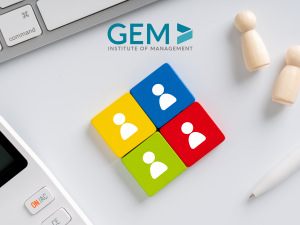Steve Jobs was the most incredible business speaker of his time. Bill Gates once called him a “witch” who “does magic” on his stage. Fortune magazine claims that his notes can establish a “hard heart full of enthusiasm”. Jobs is one of the few CEOs whose presentations are posted on the dedicated Wikipedia page; his keys alone could spark a surge in Apple stock.
But if you pull back the curtain, you can see why his presentation can be so magical: practice, and repeat it over and over again. “Most people don’t realize that what is presented to the outside is actually practiced many, many times,” John Sculley, a former Apple executive, told me. carefully prepare every word, every step, every version of the presentation.”
The best presenters make presentations look really effortless because they put a lot of effort into perfecting their presentation.
For nearly 20 years I’ve worked with the leaders of some of the world’s major brands—including Amazon, Coca-Cola, Intel, and McKinsey—to help great presenters go from good to great. They are often surprised when I share tips, but practice is the best use of time before making an important presentation. More preparation will reduce fear and become more confident.
Think of it this way: Astronauts, airline pilots, and Navy SEALS are not born with the ability to stay calm during crises. They are trained for fixed pressure situations under the same conditions they would face. Likewise, the repeated experience of presenting in front of others will reduce the anxiety associated with a big event. Far from making you appear robotic or framed, practice frees you to enjoy every moment and deliver your message with passion and enthusiasm. These five principles will help you get the most out of your rehearsal time.
Committed to improvement 10x
“Gospel of 10x” is a popular business philosophy that originated with Google co-founder Larry Page. In the case most leaders are satisfied with a 10% improvement. Page expects his team to create products 10 times better than the competition. Whatever causes it to drop, Page argues, means the product or company is just as similar to another company. The same strategy applies to public speaking. If you want to make a presentation that appeals to everyone, makes a significant difference from your competitors, it must be prepared to practice more than you did in the past. past, and work 10 times harder than your peers.
An executive I once worked with was preparing to launch an annual sales meeting. He planned to rehearse his 20-minute presentation about 15 times before it was played. I told him that Jill Bolte Taylor rehearsing her 18-minute TED Talk about 200 times before going on stage- gave her a tenfold advantage. Her keynote, “Stroke of Insight,” has been viewed 25 million times on Ted alone.
Committing to a 10x workout isn’t as scary as it sounds. Repeating your first few minutes of intro while driving somewhere or walking is also practice towards the goal. If there’s a section that’s particularly complicated or technical to cover, spend hours practicing those parts.
Strong start and end
At this point, you may start to fear that you’ve practiced too hard. This is where communication becomes more art than science. Your goal is to feel confident without memorizing every detail, and the rest is for improvisation.
Remember that the two most important parts of your presentation are the beginning and the end. The intro is the beginning of the rest of your presentation and gives your audience a reason to care about it. Your conclusion determines what parts of your idea people missed and how they will feel about the presentation in general.
The TED Talk is one of the few cases where it’s possible to memorize every word reasonably well, because it has a strict time limit of 18 minutes. For a general business meeting, fix on spending the first two minutes and the last two minutes of your presentation, as well as the first and last lines of each slide you share. If you do, you’ll be ahead of your peers in practice time.
Training under conditions of moderate stress
Susan Cain, author of Quiet, who rates herself as an introvert, battled her fear of speaking in front of the public has been attached to her since childhood. Accept the TED Talk invitation, which is out of her comfort zone. On the Friday night before her talk, Wharton professor Adam Grant, a friend of Cain, gathered about 30 of his students and alumni to watch her practice session. Rehearsing under real-world conditions gave Cain the opportunity to challenge herself with what she feared and face it on a manageable level. Cain’s talk on the power of introverts has been viewed 24 million times, and today she is developing a career as a speaker.
Researchers agree that the best way to practice presentation skills is to practice under pressure. For her book Choke, Sian Beilock examines which individuals perform best when it is viewed the most. “Even exercising under mild stress can keep you from choking in high-stress situations,” she writes.
Remember, going through a presentation in your imagination is not the same as giving presentations in front of a crowd. The more you practice like this, the less likely you are to fail under pressure. At first, your body may react the way it’s established: Your heart rate may increase and your palms may sweat. But once you get used to being in front of an audience, even if it’s just one or two people, your body stops showing resistance symptoms. Soon, you’ll think of your speech as an opportunity instead of a threat.
Record your rehearsal
Your most valuable practice tool is right in your pocket: your smartphone. Place your phone on a stand or prop up a book, press record, make a presentation, and then play it back.
By reviewing your presentation, you’ll immediately spot distracting habits like fidgeting, rolling your eyes, or flipping your hair. Look for moments when you seem unsure of yourself or clumsy in your words. Those are the parts you’ll want to practice extra on.
Request feedback
Before giving his first TED Talk, Tim Ferriss practiced giving his presentation to a small group of strangers in a friend’s house to pressure himself. But what he did after that was even more remarkable. He asked the crowd for feedback and incorporated their suggestions in his next rehearsal.
John Chambers, former CEO of Cisco, has a similar approach. In his book, Connecting the Dots, he writes that it “stuns everyone” to see how well he prepares for each media presentation and interview. Chambers is a Silicon Valley legend and was considered an effective communicator during his 20 years at the company. Humility is a trait that makes him better, he says. Everything about his presentation is meticulously rehearsed – body gestures, delivery, message, interactions with other speakers on stage. He would spend hours and hours practicing, recording his versions, reviewing them with his team, and asking for their feedback – and still does to this day. “Just like in sports, practice always pays off, no matter how long you’ve been a pro,” he writes.
There’s no magic involved in delivering a great presentation, but if you practice effectively, your audience will be enthralled. Steve Jobs made presentations look easy because he took the time to do it, and that key became his competitive weapon.
An effective presentation can also be your competitive weapon. A great presentation can do a lot: launch a career, inspire employees, attract customers, investors, and partners. Spend hours rehearsing your next big presentation. It will bring more than you can imagine.
Source: GEM Global compiled from Harvard Business Review





